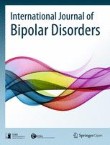Patient-evaluated cognitive function measured with smartphones and the association with objective cognitive function, perceived stress, quality of life and function capacity in patients with bipolar disorder
Cognitive impairments in patients with bipolar disorder (BD) have been associated with reduced functioning. Aims: To investigate the association between (1) patient-evaluated cognitive function measured daily ...
